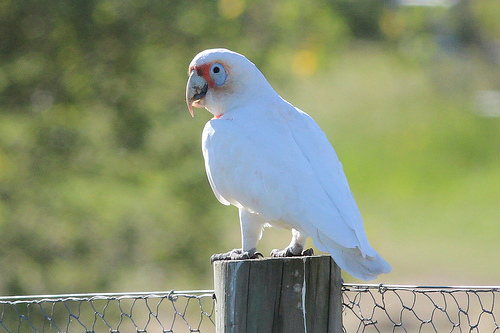Colours
Distinguishing features
It has a long bone-coloured beak, and a rim of featherless bluish skin around the eyes. The plumage is predominantly white with reddish feathers around the eyes and lores. The underside of the wings and tail feathers are tinged with yellow. (Wikipedia)
Size
- From 38 cm to 41 cm (Length of specimen) - applies to Mature specimens
Wingspan
- From 80 cm to 90 cm - applies to Mature specimens
Synonyms
Distribution
Distribution and habitat preferences
The Long-billed Corella can be found in the wild around western Victoria and southern New South Wales. Feral populations have sprung up in Sydney, Perth, Hobart and SE Queensland from the release of captive birds. The Long-billed Corella is found in grassy woodlands and grasslands, including pasture, fields of agricultural crop, and urban parks (Wikipedia).
Audio recordings
(Eastern) Long-billed Corella with Little Corellas also in the background, along with brief faint Australian Raven and Australian Reed-warbler
© John Graff
(source)
Diet
The Long-billed Corella typically digs for roots, seeds, corms and bulbs, especially from the weed onion grass. Native plants eaten include Murnong and Microseris lanceolata, but a substantial portion of the bird's diet now includes introduced plants. (Wikipedia)



